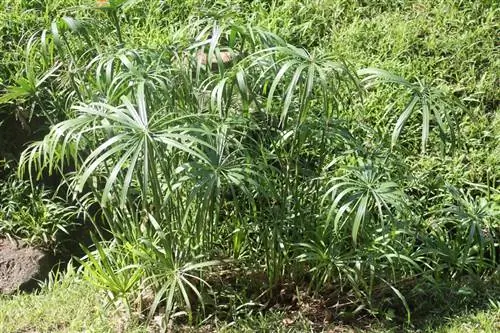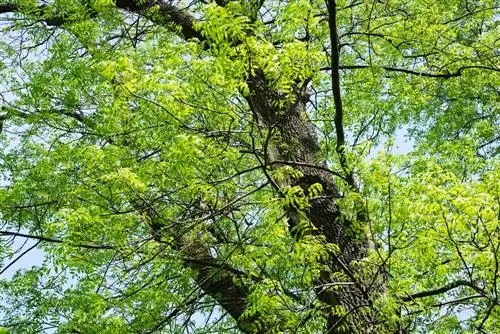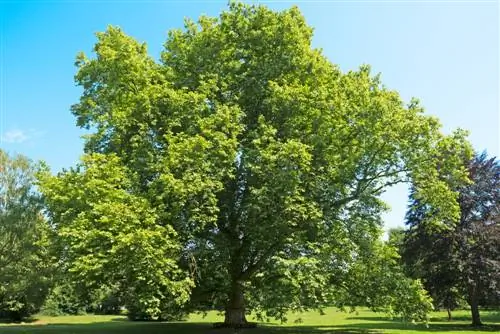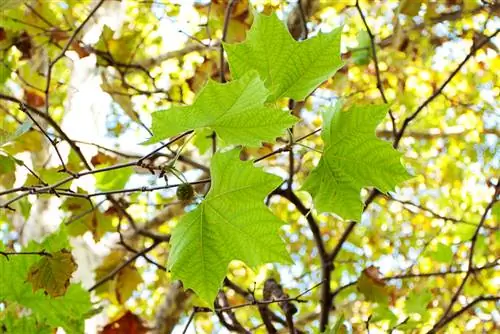- Author admin [email protected].
- Public 2023-12-16 16:46.
- Last modified 2025-01-23 11:20.
The common trumpet tree (Catalpa bignonioides) - not to be confused with the similar-sounding but not hardy angel's trumpet (Brugmansia) - originally comes from the milder climate in the south and east of North America. However, the deciduous tree, which grows up to 15 meters high, has been cultivated in Europe for several centuries and has adapted quite well to the local conditions. This is especially true for older specimens; younger ones need good winter protection.

Is a trumpet tree hardy?
A trumpet tree is only hardy from around four to five years old. Young specimens need good winter protection, such as wrapping the trunk and crown with gardening fleece (€7.00 on Amazon) or jute. Sensitive cuttings should overwinter frost-free.
Protect young trumpet tree from cold
A trumpet tree is only considered winter-hardy when it is around four to five years old and requires either no or only minimal winter protection. Younger specimens, on the other hand, are initially much more sensitive and require careful hardening. Careful winter protection is advisable for young trumpet trees. This can, for example, consist of wrapping the trunk and crown with gardening fleece (€7.00 on Amazon) or foil, bamboo mats or jute. The root area is best covered with fir or spruce branches. Some gardeners recommend - especially in regions with milder winters - whitening the trunk instead to prevent the bark from cracking caused by moisture, intense sunlight and frost.
It is best to overwinter cuttings frost-free
Cuttings up to the age of around two to three years are rarely hardy enough to overwinter outdoors. At best, such a young trumpet tree should initially remain in a planter and spend the cold season in frost-free but cool conditions. However, the tree should not overwinter in the warm living room, because as a summer-green plant it needs a break from vegetation, and under such conditions there is no chance of getting used to the seasons and therefore hardening off.
Protect trumpet tree from moisture in winter
Like so many plants, the trumpet tree, which is robust in itself, is quite sensitive to moisture and often develops fungal diseases if the site conditions are too humid. To prevent such an infection, you must avoid excessive moisture, even in winter. For this reason, the root area in particular should be well protected; the whitening of the trunk also protects against the penetration of moisture.
Tip
However, a good, carefully selected location offers the best guarantee of surviving a cold winter. The trumpet tree prefers a sunny and protected place with nutrient-rich, permeable and slightly sandy soil.






